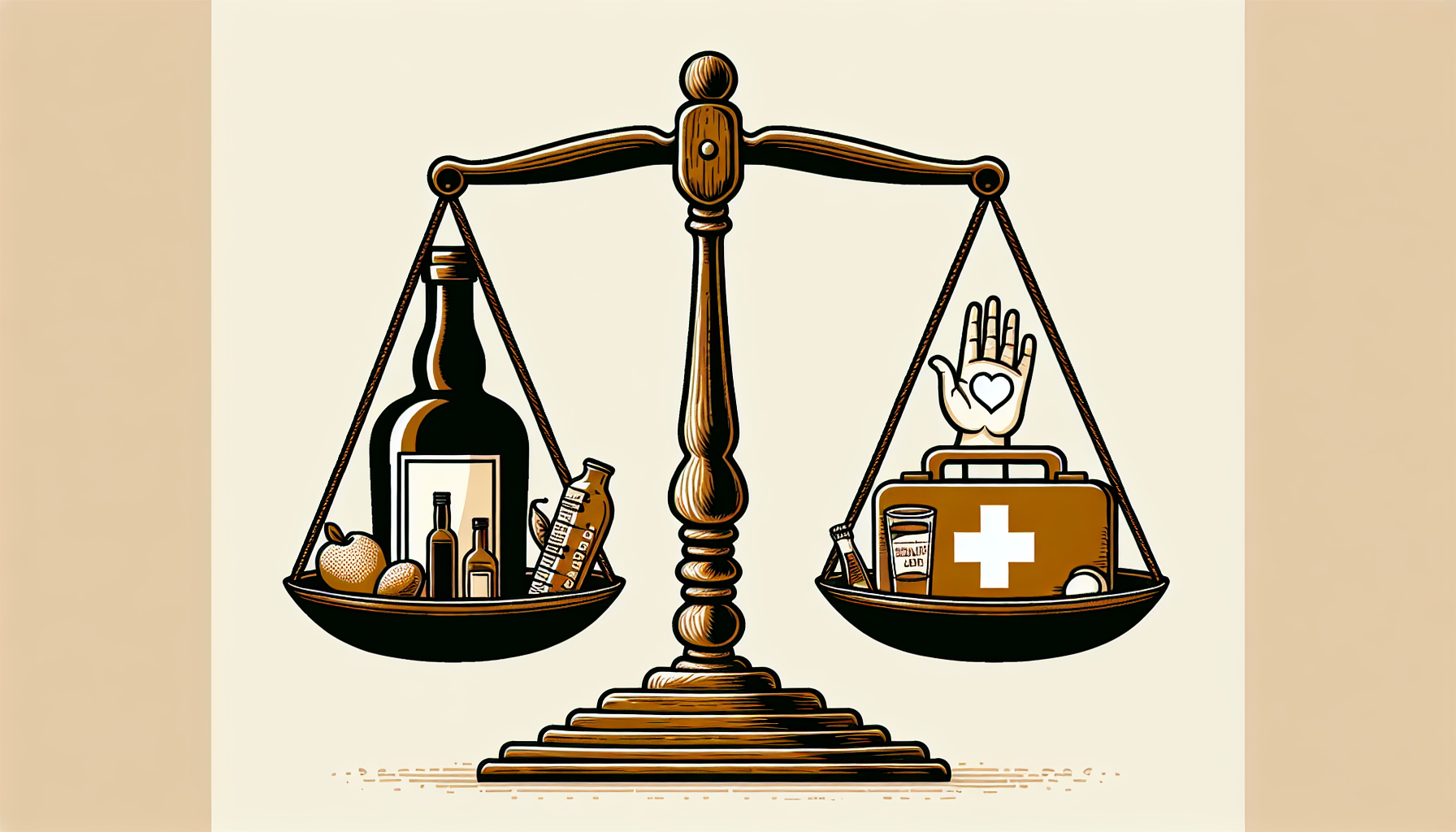August 27, 2024
How Legalizing Alcohol On Reservations Impacts Treatment & Prevention
Legalizing alcohol on Native American reservations for treatment & prevention.


Native American Reservations and Alcohol
Understanding the historical context and current status of alcohol on Native American reservations is crucial in examining the role of legalizing alcohol in supporting treatment and prevention efforts.
Historical Context of Alcohol on Native American Reservations
The historical relationship between Native American reservations and alcohol is complex and dates back to the colonization period. Alcohol was introduced to Native American communities by European settlers, often leading to detrimental consequences. The impact of alcohol abuse on these communities has been significant, with increased rates of addiction, health problems, and social issues.
Historically, alcohol was used as a tool for exploitation and control, contributing to the disintegration of Native American cultures and communities. The negative effects of alcohol abuse continue to be felt today, making it essential to address the issue through comprehensive strategies that prioritize treatment and prevention.
Current Status of Alcohol Regulation on Reservations

The regulation of alcohol on Native American reservations is determined by tribal governments, which have the authority to establish their own alcohol laws and regulations. This has resulted in a wide range of policies across different reservations, with some completely prohibiting alcohol and others allowing its sale and consumption.
The decision to legalize or restrict alcohol on reservations is influenced by various factors, including cultural beliefs, social dynamics, economic considerations, and the desire to address alcohol-related problems. Some tribes have chosen to legalize alcohol sales as a means to generate revenue and fund treatment and prevention programs. Others have opted for stricter regulations or complete prohibition to mitigate the negative impact of alcohol abuse.
It's important to note that the approach to alcohol regulation on Native American reservations is a complex issue that requires careful consideration of both the benefits and challenges involved. Striking a balance between access and control is crucial to ensure the well-being of individuals and communities.
By understanding the historical context and current status of alcohol on Native American reservations, we can better explore the potential benefits and challenges of legalizing alcohol in supporting treatment and prevention efforts. It is important to approach this topic with sensitivity and respect for the diverse perspectives and experiences of Native American communities.
Legalizing Alcohol on Reservations
The topic of legalizing alcohol on Native American reservations is a complex and multifaceted issue. It raises important discussions regarding potential benefits, as well as challenges and concerns that need to be taken into account. In this section, we will explore both sides of the argument surrounding the legalization of alcohol on reservations.
Potential Benefits of Legalizing Alcohol

Advocates for legalizing alcohol on Native American reservations argue that it can bring about several potential benefits. These benefits include:
- Economic Opportunities: Legalizing alcohol can create economic opportunities for reservations through the establishment of liquor stores, bars, and restaurants. This has the potential to generate revenue and create jobs within the community.
- Funding for Treatment & Prevention: Proponents of legalization argue that revenue generated from alcohol sales can be used to fund treatment programs and prevention initiatives for alcohol-related issues. This can provide much-needed resources to address substance abuse and support individuals on their journey to recovery.
- Regulation and Control: Legalizing alcohol allows for the implementation of regulations and control measures. This includes age restrictions, responsible service practices, and quality control standards. Such regulations can help mitigate the negative consequences associated with alcohol consumption and ensure the safety of individuals.
Challenges and Concerns
While there are potential benefits, it is important to consider the challenges and concerns associated with legalizing alcohol on Native American reservations. These challenges include:
- Health and Social Impacts: Alcohol abuse can have significant health and social consequences, including addiction, increased crime rates, domestic violence, and community unrest. Legalizing alcohol may exacerbate these issues and strain already limited resources for treatment and prevention.
- Cultural Concerns: Native American communities have diverse cultural perspectives on alcohol consumption. Some tribes have historically prohibited alcohol due to its negative impact on their communities. Legalizing alcohol may conflict with cultural values and traditions, leading to internal divisions and tensions within the community.
- Potential for Increased Access: Increased availability of alcohol through legalization may lead to higher rates of alcohol consumption, particularly among vulnerable populations. This can result in an increased risk of alcohol-related harm, such as drunk driving accidents and alcohol use disorders.
Balancing the potential benefits with the challenges and concerns is a complex task that requires careful consideration. The decision to legalize alcohol on Native American reservations should involve community engagement, thorough research, and an understanding of the unique historical and cultural contexts. By taking a comprehensive approach, policymakers and tribal leaders can work towards finding a solution that best serves the interests and well-being of their communities.
Supporting Treatment & Prevention
When it comes to addressing alcohol-related issues on Native American reservations, supporting treatment and prevention efforts is crucial. By allocating appropriate funding for treatment programs and implementing effective prevention strategies, communities can work towards reducing the harmful impact of alcohol use.
Funding for Treatment Programs
One of the key aspects of supporting treatment on Native American reservations is ensuring adequate funding for treatment programs. Access to funding enables the development and maintenance of essential services that assist individuals in overcoming alcohol addiction.
To secure funding for treatment programs, reservations can explore various avenues, including government grants, partnerships with nonprofit organizations, and community fundraising initiatives. These funds can be utilized to establish treatment centers, hire qualified professionals, provide counseling and therapy services, and offer support programs tailored to the specific needs of the community.
Prevention Strategies
In addition to treatment programs, implementing prevention strategies is essential for addressing alcohol-related issues on Native American reservations. Prevention efforts aim to reduce the occurrence of alcohol misuse and its associated negative consequences.
Effective prevention strategies may include:
- Education and Awareness: Providing education and raising awareness about the risks and consequences of alcohol misuse can help individuals make informed decisions and understand the importance of responsible alcohol consumption.
- Community Engagement: Engaging the community in prevention efforts fosters a sense of collective responsibility and encourages supportive environments that discourage excessive alcohol use. This can be achieved through community events, workshops, and support groups.
- Policy Development and Enforcement: Developing and enforcing policies that regulate alcohol sales, distribution, and consumption can help mitigate the negative impact of alcohol misuse. These policies may include age restrictions, licensing requirements, and restrictions on advertising and marketing.
- Early Intervention Programs: Implementing early intervention programs that identify individuals at risk of developing alcohol-related problems and providing them with appropriate support and resources can help prevent further escalation of alcohol misuse.
By adopting a combination of these prevention strategies, reservations can work towards creating a safer and healthier environment that supports individuals in making responsible choices regarding alcohol use.
It is important to note that the success of supporting treatment and prevention efforts relies on a combination of factors, including community engagement, collaboration with relevant stakeholders, and ongoing evaluation of the effectiveness of implemented programs. By continuously assessing and adapting these strategies, reservations can make progress towards reducing the impact of alcohol-related issues and supporting individuals in their journey towards recovery.
Community Perspectives
When it comes to the topic of legalizing alcohol on Native American reservations to fund treatment and prevention programs, there are various community perspectives to consider. Understanding these viewpoints is essential for a comprehensive analysis of the potential benefits and challenges associated with such a decision.
Views on Legalizing Alcohol for Funding Treatment

Within Native American communities, there is a range of opinions regarding the legalization of alcohol for the purpose of funding treatment programs. Some community members argue that allowing the sale of alcohol on reservations could generate revenue that can be directed towards vital treatment and prevention services. They believe that this additional funding could greatly enhance the resources available to address substance abuse issues within their communities.
On the other hand, there are community members who express concerns about the potential negative consequences of legalizing alcohol. They worry that increased access to alcohol could exacerbate existing substance abuse problems, leading to a rise in alcohol-related incidents and health issues. These individuals advocate for alternative funding sources and emphasize the importance of addressing the root causes of addiction rather than relying solely on revenue generated from alcohol sales.
Cultural Considerations
When discussing the topic of legalizing alcohol on Native American reservations, it is crucial to recognize the cultural considerations at play. Native American tribes have unique histories and relationships with alcohol, often shaped by colonialism, forced displacement, and cultural trauma. The impact of alcohol abuse within these communities is deeply intertwined with issues of cultural preservation, identity, and healing.
Some community members argue that the legalization of alcohol would help reclaim a sense of sovereignty and control over their own cultural practices. They believe that by regulating alcohol sales and implementing culturally appropriate prevention strategies, they can mitigate the negative effects of alcohol abuse and reclaim their cultural heritage.
Others, however, emphasize the importance of cultural healing and recovery without relying on the sale of alcohol. They advocate for alternative approaches to funding treatment and prevention programs that align with traditional values and promote holistic well-being.
By considering the diverse perspectives within Native American communities, policymakers and stakeholders can engage in meaningful dialogue to shape alcohol regulation policies that prioritize the health, well-being, and cultural considerations of these communities.
In the next section, we will explore examples of positive impacts resulting from alcohol regulation initiatives and the lessons learned from these experiences.
Success Stories
When examining the role of legalizing alcohol on Native American reservations in supporting treatment and prevention, it's important to consider success stories that highlight the positive impact such measures can have. These success stories serve as examples of how legalizing alcohol can contribute to the overall well-being of Native American communities. Additionally, they provide valuable lessons that can guide future efforts in alcohol regulation on reservations.
Examples of Positive Impact
- Increased Funding for Treatment Programs: One of the notable success stories is the increased availability of funding for treatment programs. By legalizing alcohol on reservations and implementing appropriate regulations, revenue generated from alcohol sales can be directed toward supporting treatment facilities and initiatives. This allows for the expansion and improvement of treatment programs, providing individuals with the resources they need to overcome addiction.
- Improved Access to Support Services: Legalizing alcohol on reservations can lead to the establishment of comprehensive support services. These services may include counseling, therapy, and aftercare programs, which are essential components of a successful recovery journey. By integrating these services into the community, individuals struggling with addiction have easier access to the help they need, fostering a supportive environment for recovery.
- Reduced Stigma Surrounding Addiction: Another positive impact of alcohol legalization is the reduction of stigma surrounding addiction. When alcohol is legally regulated and treatment programs are supported, it sends a message that addiction is a treatable condition rather than a moral failing. This shift in perception encourages more individuals to seek help without fear of judgment, ultimately promoting a healthier and more compassionate community.
Lessons Learned
While success stories provide valuable insights, it is equally important to learn from the challenges and lessons that have emerged from these experiences. Here are some key lessons learned from the implementation of alcohol legalization on Native American reservations:
- Balancing Access and Control: One of the critical lessons is the need to strike a balance between providing access to alcohol for economic purposes and implementing effective control measures to prevent misuse. It is crucial to develop comprehensive regulations that address issues such as age restrictions, responsible consumption, and monitoring of alcohol-related activities to ensure the well-being of the community.
- Community Involvement and Decision-Making: The success of alcohol legalization initiatives is often dependent on community involvement and engagement. Inclusive decision-making processes that involve community members, tribal leaders, and relevant stakeholders can help ensure that the needs and concerns of the community are taken into account. This collaborative approach fosters a sense of ownership and increases the likelihood of successful implementation.
- Comprehensive Prevention Strategies: Alongside alcohol legalization, the implementation of effective prevention strategies is essential. These strategies can include education campaigns, community outreach programs, and initiatives aimed at promoting responsible alcohol consumption. By addressing prevention alongside treatment, communities can work towards reducing the overall impact of alcohol-related issues.
Examining the success stories and lessons learned from alcohol legalization on Native American reservations provides valuable insights for future efforts. By carefully considering the positive impact and challenges faced, stakeholders can develop strategies that prioritize the well-being of individuals, foster community growth, and support effective treatment and prevention programs.
Moving Forward
As the discussion around alcohol regulation on Native American reservations continues, it is crucial to consider strategies that balance access and control. Finding a middle ground can help address the concerns while still allowing for the potential benefits that legalizing alcohol can bring. Additionally, exploring future directions for alcohol regulation on reservations can pave the way for more effective treatment and prevention efforts.
Strategies for Balancing Access and Control
When it comes to balancing access and control of alcohol on Native American reservations, several strategies can be considered. These strategies aim to address the challenges and concerns associated with alcohol regulation. Some possible approaches include:
- Strict Licensing and Permitting: Implementing strict licensing and permitting processes can help regulate the sale and distribution of alcohol on reservations. This can involve thorough background checks, training requirements for vendors, and regular inspections to ensure compliance with regulations.
- Enforcement of Age Restrictions: Strictly enforcing age restrictions is crucial in preventing underage drinking. Implementing robust identification verification systems and conducting regular compliance checks can help ensure that alcohol sales are limited to individuals of legal drinking age.
- Community Education: Promoting community education and awareness programs can help individuals make informed decisions about alcohol consumption. These programs can focus on the risks associated with excessive drinking, the importance of responsible alcohol use, and the resources available for treatment and prevention.
- Collaboration with Treatment Providers: Establishing strong partnerships with treatment providers can enhance access to treatment services for individuals struggling with alcohol addiction. This can include funding for treatment programs, supporting community-based initiatives, and ensuring that culturally appropriate treatment options are available.
Future Directions for Alcohol Regulation on Reservations

Looking ahead, it is essential to consider the future directions for alcohol regulation on Native American reservations. This involves continuously evaluating the effectiveness of existing policies and exploring new approaches to support treatment and prevention efforts. Some potential future directions include:
- Data Collection and Evaluation: Collecting data on alcohol-related issues, such as consumption patterns, health outcomes, and treatment success rates, can provide valuable insights for future decision-making. Regular evaluation of the impact of alcohol regulation policies can help identify areas for improvement and guide future strategies.
- Integration of Traditional Practices: Incorporating traditional practices and cultural considerations into alcohol regulation efforts can strengthen community engagement and support. Recognizing the importance of cultural values and traditions can help create a more holistic approach to treatment and prevention.
- Collaboration and Partnerships: Continued collaboration between tribal governments, healthcare providers, law enforcement agencies, and community organizations is crucial for effective alcohol regulation. Building strong partnerships can leverage resources, knowledge, and expertise to address the complex challenges associated with alcohol use.
- Continued Research: Investing in research focused on alcohol-related issues specific to Native American communities can provide evidence-based insights for future policy development. This research can explore the unique factors influencing alcohol consumption, treatment outcomes, and prevention strategies within these communities.
By implementing strategies for balancing access and control and exploring future directions for alcohol regulation, Native American reservations can continue to make progress in supporting treatment and prevention efforts. It is through ongoing collaboration, education, and data-driven decision-making that positive change can be achieved.

.jpg)




.jpg)

